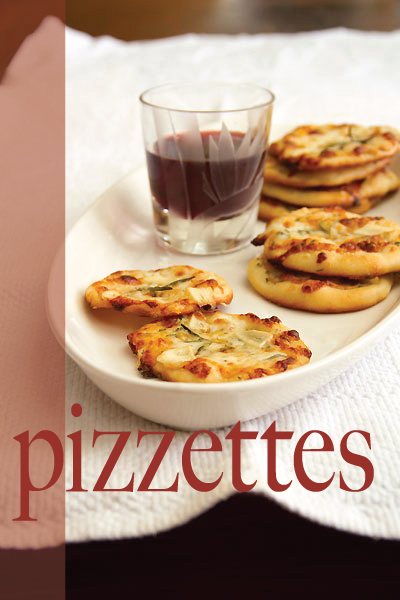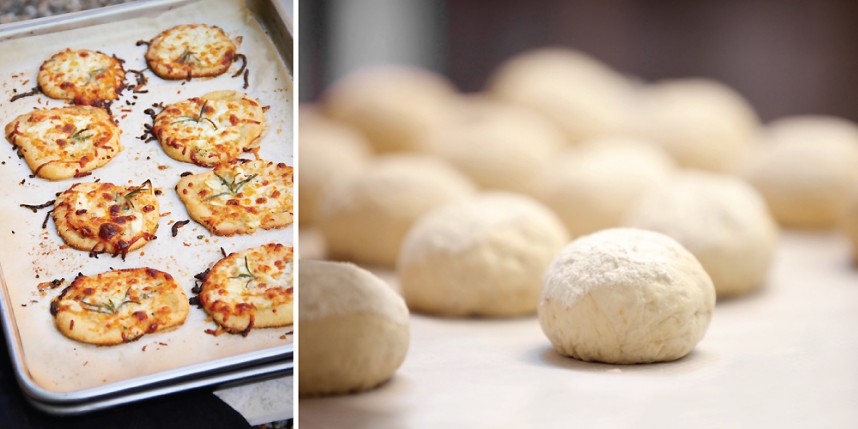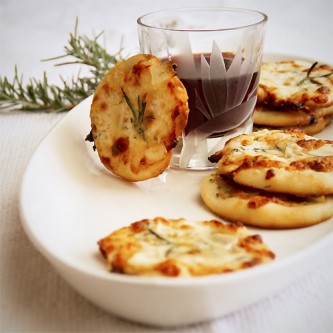
Pizzettes. They’re just tiny pizzas.
But they’re tiny for a reason.
That reason is simple. People love pizza. Be it take-out, homemade, served at the greatest pizzeria in town or even frozen, we all love it.
It can be in the style of a chewy New York “pie” or deep dish from Chicago. Rustic or elegant. Heaped with traditional ingredients like mozzarella and sausage, or veering into new territory– thin, charred and delicately drizzled with truffle oil. This way, that way– here, there and everywhere, pizza is a worldwide favorite.
The earliest versions of pizza were probably simple flatbreads baked hot and fast with garlic and pork fat. Once tomatoes hit the shores of the old world, pizza matured into the tomato and cheese topped version with the queenly name of Margherita. It’s often considered the standard bearer. But it’s not the only way to go, pizza has been reinvented countless times and continues to evolve everyday.
So if people love pizza so much why are you looking at something I’m calling pizzettes? Well, because in my opinion really good pizza is really hard to make at home. The problems are many, but I’ll start with the dough.
The dough at the very best pizzerias has a yeasty, fermented quality that’s hard to reproduce at home. That’s because they often start the dough making process with a yeast and flour mixture known as a “sponge”. Typically that ”sponge” has been allowed to ferment for a period of time, producing superior flavor and texture. Which may seem like a game ender, but there are ways to solve this problem. I find that less involved doughs like the Easy Flatbread Dough I use in these pizzettes, and even good quality store-bought dough can develop a similar slightly fermented taste if the finished dough is allowed to sit at room temperature a couple of hours before the pie preparation begins.
Problem solved? Well partly. Even with good dough, pizza can still be disappointing when made at home. That’s because most kitchens are just not equipped with an oven hot enough or smoky enough to produce really good pizza. Pizza stones are designed to help– and they do, but just somewhat. I have seen people line their ovens with bricks, which is very clever, but altogether too much work for me.
The solution (for me) are these pizzettes. I think that smaller flatbread versions of pizza are much easier to handle at home. I promise you, pizza stone or not, you’ll be pleased with these little pies and their chewy, slightly charred crusts. I made my pizzettes with garlic and rosemary, but you can top them any which way you like. They’re your pizzettes. GREG





I hate rolling out a big pizza so pizzettes are definitely going to be my pizza solution from now on!
Wow Bite size pizzas. I love! XOXO
These are just too dang cute for words.…I’ll take a dozen!
Looks mahhhhhvelous. I’m thinking the extra bonus of these little guys is that eating them is just a “snack” so you can also go out for pizza later. not because the pizzettes weren’t satisfying, but because you can (almost) never have too much pizza.
So how many pizzettes is it polite to eat in one sitting?
These look too easy to eat! I’m actually researching how to build my own pizza oven, the heat is really important and my oven only hits 550 degrees so I’d love a wood burner in the yard!
Greg, I do so love a good little pizzette, and yours are gorgeous! And doesn’t pizzette just sound ever so much better than mini pizza?!
We really do love pizzettes. I promise.
Just in time for the summer entertaining. Who wouldn’t like this!..with a glass of wine or beer, you’re set!
I was at a pizzeria in Italy where they said their sponge was over 100 years old. Now that’s history. But I dare you to eat just one of these little pizzettes.
These look so easy Greg! I agree, pizza at home is just not the same! I’ll definitely give these a try 🙂